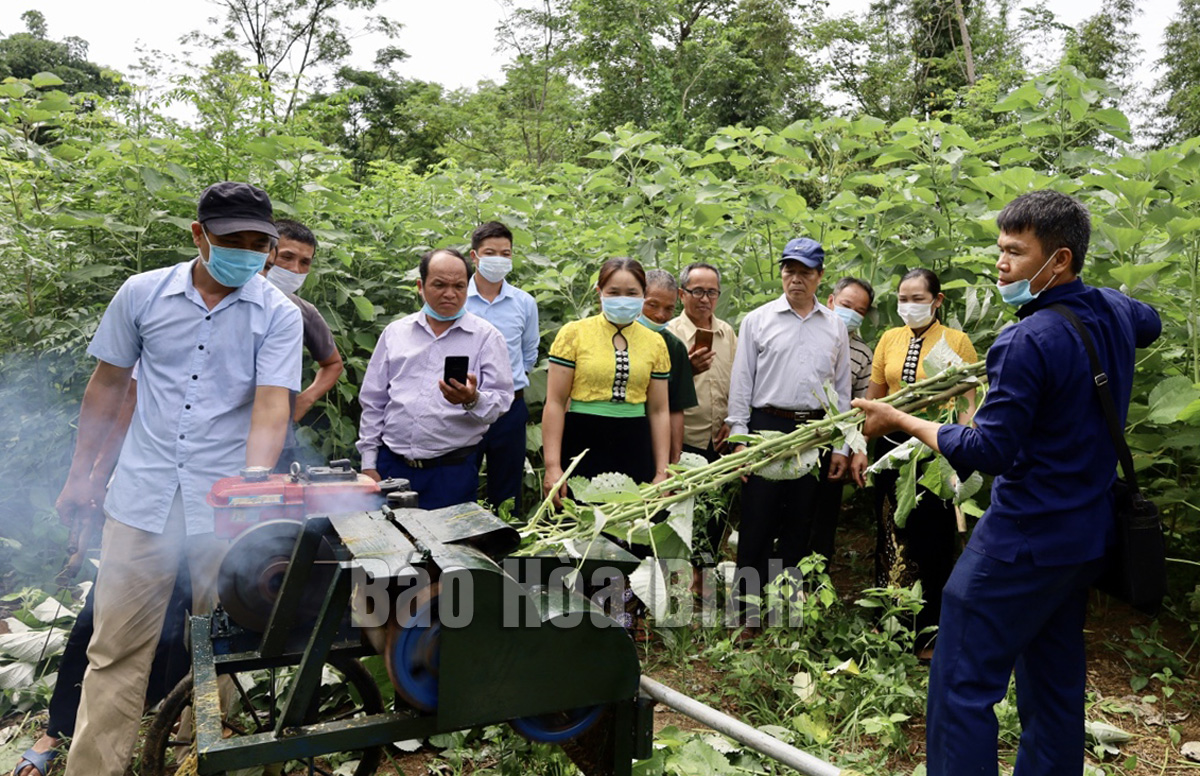(HBO) - The model of growing AP1 'gai' (green ramie) plant has been developed under a partnership between a cooperative and farmers of Trung Thanh, Doan Ket and Muong Chieng communes in Hoa Binh’s mountainous district of Da Bac.
Farmers in Bay village of Trung Thanh commune (Da Bac district)
receive assistance to process ‘gai’ plants in the garden.
The family of Luong Van Dung in Trung Tam village of Trung Thanh commune has
grown the AP1 gai plant for nearly one year, on a hill area of 3ha previously
allocated for maize.
In the start of 2022, the plants produced the third yields and processing and
sundrying were done in the cultivation area.
Dung said his family earns 140 million VND (6,130 USD) each year from planting
'gai' trees and the cooperative is responsible for the sale. The cultivation
also improves the ecosystem as the farmers do not have to use herbicide.
By growing plants on favourable soil and providing better conditions for the
trees, the family Luong Van Son in the same village is among the households
earning the most from ‘gai’ plants. He said the farmers can rest assured
regarding consumption markets, and rake in profits 10-fold that from growing
some traditional plants.
‘Gai’ trees help his family earn an average of 180 million VND
per ha annually, Son said.
The Hoa Binh agricultural cooperative has joined hands with local farmers of Da
Bac since the start of the project. Many families were reluctant to participate
at first, said member of the cooperative Le Minh Hung.
After receiving approval of the provincial People’s Committee, the cooperative
struck a 20-year contract to supply material for a textile manufacturing
factory of An Phuoc Group in Thanh Hoa.
Under the partnership, farmers cultivate in their land lots while the
cooperative provides seedlings and technical guidance and commits stable and
long-term sale.
The model is drawing more farmers in mountainous communes of Dong Chum and Cao
Son. It was carried out in an area spanning about 3.5ha in Thung Rech village
of Kim Boi district.
Head of the farming and phytosanitary division Nguyen Hong Yen said that not
only firms support local farmers, State management agencies also pay due
attention for the development of the plant.
Thanks to early success of the model, cultivation area will be expanded to 300ha
this year and thousands of ha in the coming ones.



